The Oppo Find N is one of the best foldable smartphones available in 2022, but you'll likely never get your hands on one.
Should I Buy The Oppo Find N?
Pros
- Incredible foldable hardware
- Great triple camera
- Impressive battery life
- Surprisingly budget-friendly
Cons
- No Google Play (but can be sideloaded)
- No water-resistance
- Not available outside of China
Our Verdict
Price When Reviewed
- Unavailable in the US
Foldable smartphones are the next big thing, with companies including Motorola, Xiaomi, Huawei, Samsung, and now Oppo all dabbling with the foldable form factor.
Despite being comparatively late out of the gate with the Oppo Find N, the company seems to have struck gold, with features, design, and functionality that often surpass the competition, and at a cheaper price point too.
The only catch? It’s a China-only smartphone for now, with no plans for Oppo to release the Find N internationally – and that’s a massive disappointment considering the stellar foldable experience on offer.
Design & Build
- Solid, robust design
- Impressive hinge system with no visible gap
- No water-resistance
The Oppo Find N is, in some ways, a very familiar device. It sports the same internal fold that opens like a book as key rivals including the Huawei Mate X2 and Samsung Galaxy Z Fold 3, but it introduces a few key differences that could make it the best foldable design to date.
That’s not the case with the Oppo Find N though; it sports a compact 5.49in display with an 18:9 aspect ratio for a more typical slab smartphone experience when folded, with the added bonus of being much more compact in the pocket than its rivals too.
The bezel surrounding the outer display is slightly thicker than 2022 flagships, and there is a centrally-placed hole-punch camera that’s wider than some might like, but these aren’t elements that detract from the overall experience – in fact, it’s something that you’ll likely not notice within a day or two of using it.
The phone feels reassuringly sturdy when folded, with a near-complete seal that keeps the vast majority of dust and dirt away from the internal display and hinge when put in a pocket. The occasional bit of dust or lint can still appear, but it’s nowhere near as much of a worry as with the visible gap of the Z Fold 3.
The only downside to using the Oppo Find N when folded is, much like its rivals, its weight and thickness. It’s essentially a two-phone sandwich when folded, and that means it measures in at 15.9mm thick – almost 1.5mm thicker than the Mate X2 and Z Fold 3, though it’s marginally lighter than Huawei’s option at 275g.
The hinge system is an important part of any foldable, and Oppo’s is about as sturdy and secure as you’ll get in 2022, though without any grooves on the side of the phone, it’s almost impossible to unfold one-handed.
Like Samsung’s foldable, you can anchor the display part-way for a versatile laptop-esque viewing experience, though it’s lacking the software support – particularly in third-party apps like YouTube – that the Z Fold 3 offers.
Aside from the plastic internal display (how else do you expect it to fold?!) the Find N is built from a combination of metal and glass. Oppo has gone all-out on the fine details like the ‘Designed for Find’ detailing on the hinge and a glass back with a subtle sparkle that make it look and feel like a premium device.
It’s also available in three flavours – black, white and purple – so you can choose the finish that best suits your style.
Though the cover display and glass rear are protected by Gorilla Glass Victus for added drop protection, it’s worth noting that there’s no official water-resistance rating like the IPX8 certification from the Galaxy Z Fold 3.
However, the overall form factor and solid hinge of the Oppo Find N make it one of the best foldable designs on the market right now.
- Gorgeous internal 7.1in 120Hz display
- Square aspect ratio doesn’t play well with all apps
- Cover display limited to 60Hz
Both of the Find N's displays sport AMOLED tech for a bright, vibrant experience with colours that pop out of the screen – and if that’s not to your taste, the vibrancy can be adjusted in the Settings menu.
That’s essentially where the similarities end though, as unlike Huawei and Samsung, Oppo’s foldable offers a different refresh rate across the two screens.
Despite even budget-focused phones now often sporting a 120Hz display, Oppo decided to keep the 120Hz refresh rate exclusive to the inner 7.1in display, with the cover display limited to 60Hz. It’s easily the weakest area of the front-facing display, and especially noticeable as you switch between the two screens.
Resolution is another differentiator, with the front cover display coming in marginally under Full HD at 988 x 1972. While the internal display is FHD+ at 1792 x 1920, it's still a slight resolution downgrade compared to the Mate X2 or Z Fold 3.
But, despite the limited refresh rate and the fact I had a large expansive internal display at my fingertips, the familiar aspect ratio and compact dimensions of the cover display meant I found myself using it more often than anticipated, especially when out and about.
It’s also my default display for some apps, as the near-square 8.4:9 aspect ratio of the internal display isn’t ideal for all apps. Instagram, for example, loads slightly strangely in the unusual aspect ratio, struggling to display full images on the screen, meaning you’ll have to scroll to view a portrait-style photo or video.
What it is great for, however, is running two apps side-by-side – a function enabled by running two fingers down the centre of the internal display. That makes it easy to keep an eye on Twitter while texting with friends on WhatsApp, though I assume Oppo has more productivity-focused use cases in mind.
The form factor is also ideal for reading articles, browsing the web, and taking a closer look at snaps you’ve taken on the phone. It’s handy for video chats too – something that can’t be said of Huawei’s option, which lacks an internal selfie camera.
Of course, the big caveat to foldable tech is the crease in the display. Yes, there is a crease, and yes you can still feel it if you run your fingers over it, but the central vertical position of the hinge means that doesn’t happen very often, and it’s much less prominent than early foldables.
It’s surprisingly robust too, with no fear or worry that I’d damage the screen or hinge by pressing on it too hard.
Camera
- Great trio of rear-facing cameras
- Impressive camera tuning
- Night Mode needs some work
Huawei’s foldable Mate X2 goes all out on its camera offering with flagship-level snappers, while Samsung took a more conservative approach with a trio of 12Mp snappers on its Galaxy Z Fold 3.
Oppo finds a comfortable middle ground between the two, sporting a main wide 50Mp snapper alongside a 16Mp 123-degree ultrawide and a 13Mp 2x telephoto with the ability to capture impressive shots with a tap.
Images captured on the main lens are bright, vibrant and incredibly detailed. Even in challenging light conditions, such as taking photos with the sun in shot, the dynamic range on offer is impressive, capturing as much detail in the sky as in shadows. Skin tones are accurate, and colours aren’t as oversaturated as you’ll find on some flagships.
It’s not quite as impressive in low light, and there is notable lens distortion around the edges, but it’s excellent for capturing expansive shots with great detail and dynamic range.
Though the 2x telephoto lens is limited compared to the 3x, 5x and even 10x zoom lenses available on flagships like Samsung’s Galaxy S22 Ultra, it does a great job at capturing close-up shots, and with PDAF tech on offer, most are perfectly focused too.
Oppo has done an admirable job at tuning the three lenses to closely match in terms of colour accuracy and dynamic range, allowing you to essentially mix-and-match shots between all three without any notable difference.
The only area the Oppo Find N really struggles is low-light photography, with only the main lens offering the OIS needed for great handheld night photography. Even when using the main lens, the dedicated Night Mode isn’t as good as the best slab-style flagships, including Oppo's own Find X5 Pro.
It really is a lot of fun taking photos on the Oppo Find N, with generally great performance – just don’t expect much in exceptionally low-light conditions.
Performance
- Qualcomm Snapdragon 888
- 8/12GB of RAM
- 256/512GB storage
- Flagship-level performance, but gameplay capped at 60fps
You’ll find Qualcomm’s Snapdragon 888 at the heart of the Oppo Find N, paired with either 8GB or 12GB of RAM and 256GB or 512GB of storage depending on the variant you opt for.
It does miss out on the newer Snapdragon 8 Gen 1 of 2022 flagships, but this was technically released just before Qualcomm revealed the upgraded processor in late 2021 – and besides, it’s the same processor you’ll find in the equally premium Galaxy Z Fold 3.
It also benchmarks well, with results in-line with not only other foldables but other premium smartphones – albeit falling slightly behind 8 Gen 1-equipped devices, as you might imagine.
There’s no noticeable lag or stuttering scrolling through media-heavy apps, animations are buttery smooth – especially on the internal 120Hz display – and the phone rarely heats up to a noticeable level. Even switching from one screen to another is seamless.
It’s also great for gaming once you adjust for the boxy aspect ratio, though it’s certainly more suited to casual games like Monument Valley than multiplayer FPS titles where the narrow field of view can be detrimental to your performance.
You can adjust the aspect ratio to produce a standard 16:9 centrally-placed window in competitive games, but it’s not quite as immersive an experience with huge black bars.
The only real potential issue is that, despite having software enhancements for games that allow you to block incoming notifications and crank up performance, the refresh rate seems to be capped at 60Hz in games – even on the 120Hz panel.
Performance aside, expect fast wireless connectivity with staples including 5G connectivity, Wi-Fi 6, Bluetooth 5.2 and NFC for mobile payments.
Battery Life & Charging
- 4500mAh battery
- 33W wired, 15W wireless, 10W reverse wireless charging
- Excellent battery life when using either display
Like other book-style foldables, the battery cell within the Oppo Find N is split into two halves – one on either side of the hinge mechanism – with a combined 4500mAh capacity putting it just ahead of Samsung’s Galaxy Z Fold 3.
When it comes to battery performance, it’ll largely depend on how you use the Find N. If you find yourself using the smaller 60Hz cover display, a viable option thanks to a regular smartphone aspect ratio, you can easily squeeze over a day’s usage, though that’ll drop once you start using the larger 120Hz panel.
I found myself using the cover display more than initially anticipated, and even when I was using the larger display to read articles, watch TikTok, and stream YouTube videos, I was never concerned about battery life.
Even with moderate use, mainly focused on the larger display, I found the Find N comfortably lasted all day, and with lighter use, I squeezed a full two days out of the phone.
You also get a wireless option, with 15W wireless charging and 10W reverse wireless charging on offer.
Software
- Runs Android 11 with ColorOS 12
- No Google Play, but easy to install
- Bloatware and Chinese apps come pre-installed
- Great foldable software enhancements
Software will likely be the biggest issue for Westerners that want to import the Oppo Find N, as with a China-only focus, it doesn’t ship with Google Play. What it does come with, however, is a lot of bloatware and Chinese apps that are yet to be translated into English – in fact, that’s a theme across the OS.
While most of Oppo’s ColorOS 12 has been translated, you’ll occasionally come across a menu or an app only available in Mandarin – that includes Oppo’s own app store that you’ll need to use to update some of the stock apps on the phone.
There are still limitations, like the lack of Google Assistant activation (you’re forced to use Breeno, Oppo’s China-focused virtual assistant) and limitations on Android Auto, but largely speaking, it’s business as usual.
There are plenty of software tweaks in ColorOS 12 that allow you to take advantage of the foldable form factor too. That includes an intuitive split-screen experience on the larger internal display, the ability to force any app to use the boxy aspect ratio, and the option to use the cover display as a camera viewfinder when taking snaps on the internal display, giving your subject a preview of the snap you’re taking.
It’s small details like this that really elevate the software experience on the Oppo Find N, and while it’s not perfect for Westerners, it gets me very excited about future Oppo foldables – especially amongst rumours that the Find N could make an appearance in the West as a OnePlus foldable, complete with OxygenOS.
It’s worth noting that while it runs ColorOS 12, Oppo’s Android 12 skin, the Oppo Find N ships with Android 11 in the box, with no word on if or when it’ll get an update to the nearly year-old Android 12 or the incoming Android 13.
Price & Availability
The biggest problem with the Oppo Find N is that it’s a China-exclusive, with no plans for the foldable to roll out internationally in its current form – OnePlus rumours aside. That means you’ll have to import one from China, and with it comes extra import fees and the need to sideload Google Play and related services onto the phone yourself.
That won’t be a problem for some, but it’s not quite as simple as being able to order one from a local retailer or carrier.
It’s a shame because it’s actually one of the most affordable foldables to date, with the Oppo Find N starting at an impressive ¥7,669 (approximately £910/US$1,210) in China, undercutting even Xiaomi’s Mi Mix Fold, which costs ¥9,999. Here’s how pricing stacks up:
- 8GB + 256GB - ¥7,699 (approx. £910/€1,070/$1,210/₹92,000)
- 12GB + 512GB - ¥8,999 (approx. £1,065/€1,255/$1,415/₹107,500)
Of course, if it did ever make it to international shores, it’d cost more than its converted price, but it could still be one of the most affordable options around considering the Galaxy Z Fold 3 starts at a cool £1,599/$1,799.
Verdict
The Oppo Find N is the most exciting foldable phone that you’ll probably never be able to buy – at least without importing one from China.
This is a stellar attempt at a book-style foldable, with premium build quality that surpasses that of Huawei and Samsung in most regards.
The small 5.49in cover display provides a more traditional smartphone experience compared to comically tall alternatives, while also providing a smaller pocketable footprint.
The hinge system is robust and well-built with no visible gap between the two halves of the display when closed, and the expansive 7.1in internal display looks great with no noticeable crease when viewed head-on.
Throw in impressive performance, a strong suite of cameras, and multi-day battery life and you’ve got a stellar foldable smartphone. Let’s just hope it makes it to the West officially one day.
Specs
- Folded: 132.6 x 73 x 15.9mm
- Unfolded: 132.6 x 140.2 x 8mm
- 275g
- Cover display: 5.49in AMOLED display, 988 x 1972, 18:9, 60Hz
- Internal display: 7.1in LTPO AMOLED display, 1792 x 1920, 8.4:9, 120Hz
- Qualcomm Snapdragon 888
- 8/12GB of RAM
- 256/512GB of UFS 3.1 storage
- Rear camera: 50Mp f/1.8 OIS main camera, 16Mp f/2.2 123-degree ultrawide, 13Mp f/2.4 2x telephoto
- Selfie camera (cover & inner display): 32Mp f/2.4
- UP to 4K@60fps video recording
- Stereo speakers
- 4500mAh battery
- 33W wired charging
- 15W wireless charging
- 10W reverse wireless charging
- Wi-Fi 6
- Bluetooth 5.2
- NFC
- Side-mounted fingerprint scanner
- Available in Black, White & Purple

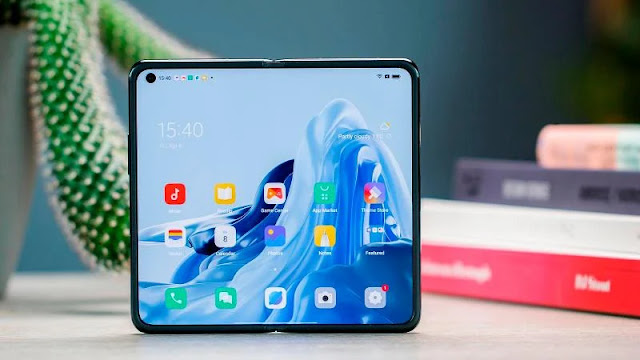

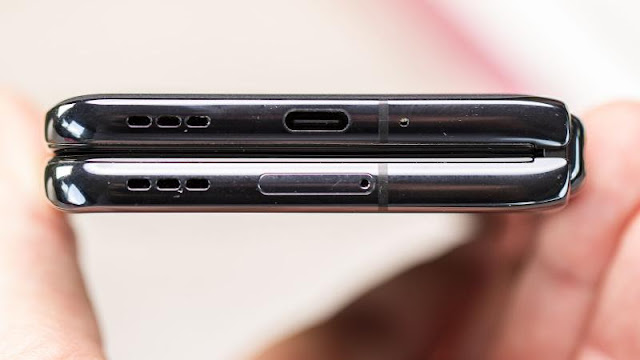

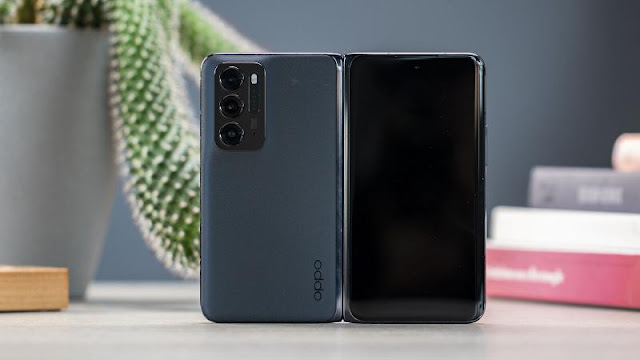


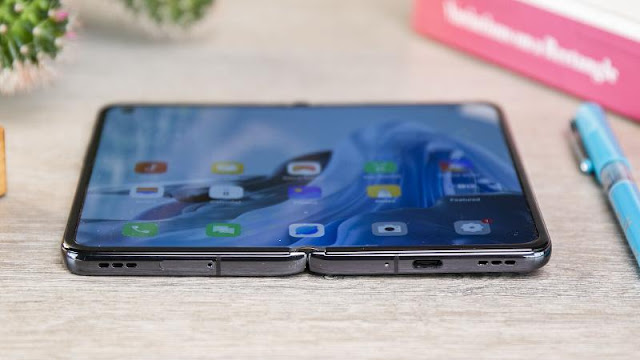

.jpg)
.jpg)
.jpg)
.jpg)
.jpg)
.jpg)
.jpg)
.jpg)
.jpg)
.jpg)
.jpg)
.jpg)
.jpg)
.jpg)
.jpg)
.jpg)
.jpg)
.jpg)
.jpg)
.jpg)
.jpg)




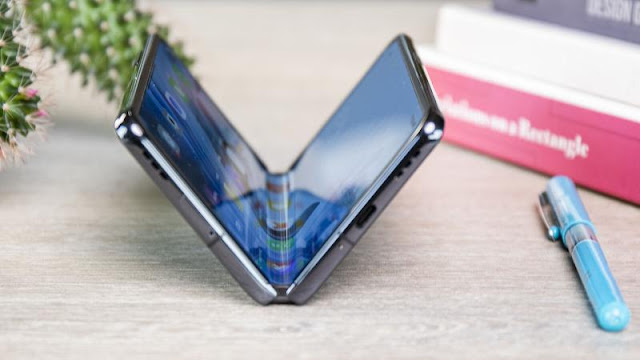


%20Review.webp)











0 comments:
Post a Comment